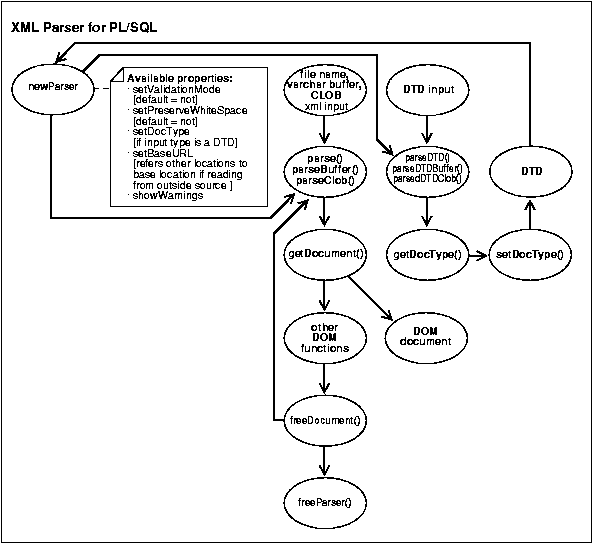Release 3 (8.1.7)
Part Number A86030-01
Library |
Product |
Contents |
Index |
| Oracle8i Application Developer's Guide - XML Release 3 (8.1.7) Part Number A86030-01 |
|
Using XML Parser for PL/SQL, 4 of 7
The XML Parser for PL/SQL makes developing XML applications with Oracle8i a simplified and standardized process. With the PL/SQL interface, Oracle shops familiar with PL/SQL can extend existing applications to take advantage of XML as needed.
Since the XML Parser for PL/SQL is implemented in PL/SQL and Java, it can run "out of the box" on the Oracle8i Java Virtual Machine.
XML Parser for PL/SQL supports the W3C XML 1.0 specification. The goal is to be 100% conformant.. It can be used both as a validating or non-validating parser.
In addition, XML Parser for PL/SQL provides the two most common API's developers need for processing XML documents:
This makes writing custom applications that process XML documents straightforward in the Oracle8i environment, and means that a standards-compliant XML parser is part of the Oracle8i platform on every operating system where Oracle8i is ported.
Figure 24-1 shows the XML Parser for PL/SQL usage and parsing process diagram.
Table 24-1 lists available properties for the newParser procedure:
parserClob() if the XML input is a CLOB
If a DTD is also input, it is called by the following procedures:
For the XML Input: For an XML input, the parsed result from Parse(), ParserBuffer(), or ParserClob() procedures is sent to GetDocument().
getDocument() procedure performs the following:
freeDocument() function to free up the parser and parse the next XML input
freeParser() to free up any temporary document structures created during the parsing process
For the DTD input: The parsed result from parseDTD(), parseDTDBuffer(), or parseDTDClob() is used by getDocType() function.
getDocType() then uses setDocType() to generate a DTD object.
setDocType() to override the associated DTD.

The following is the default behavior for XML Parser for PLSQL XML:
The types and methods described in this manual are supplied with the PLSQL package xmlparser().
|
|
 Copyright © 1996-2000, Oracle Corporation. All Rights Reserved. |
|